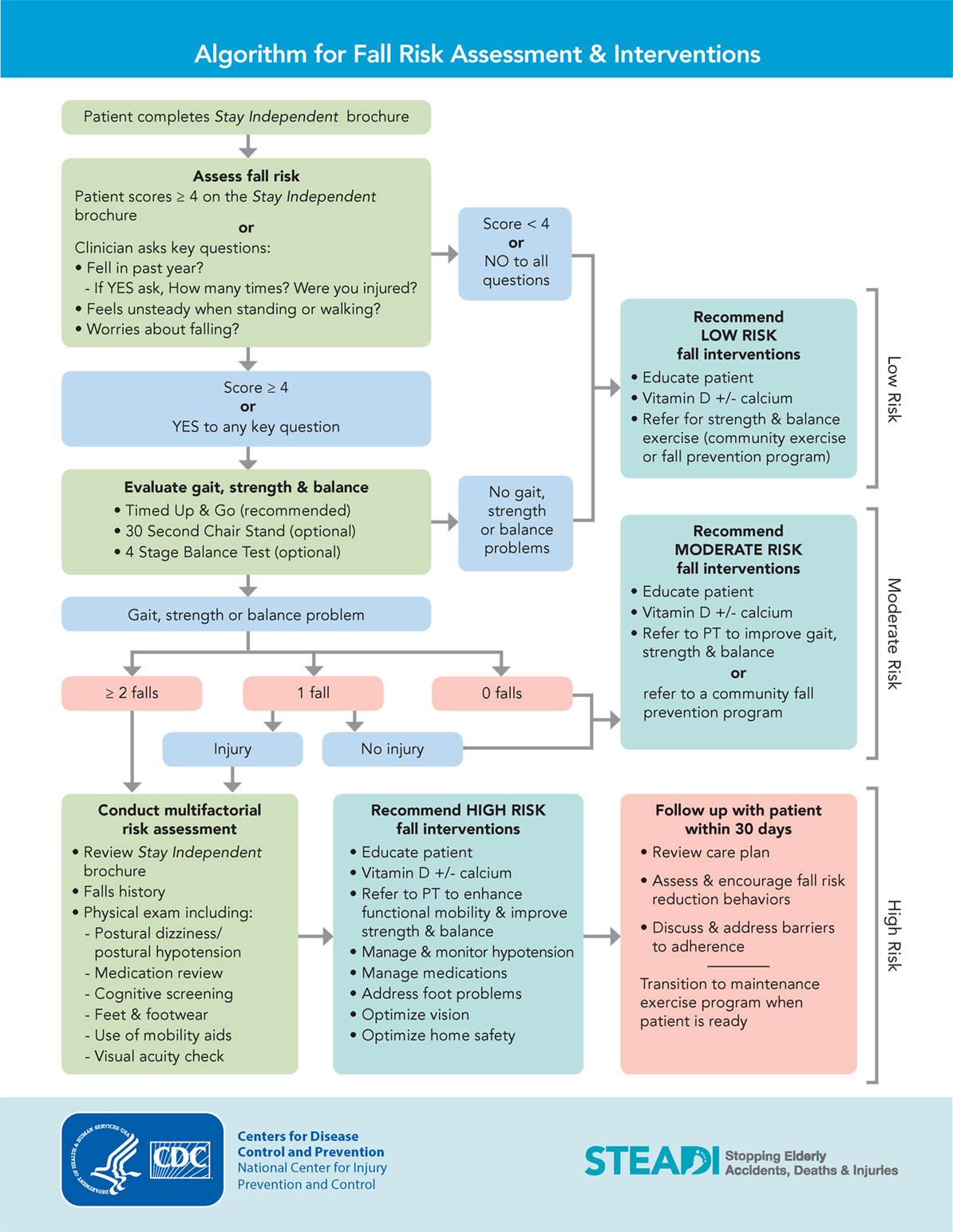Dementia Fall Risk Can Be Fun For Anyone
Dementia Fall Risk Can Be Fun For Anyone
Blog Article
Getting The Dementia Fall Risk To Work
Table of ContentsUnknown Facts About Dementia Fall RiskThe Basic Principles Of Dementia Fall Risk The Single Strategy To Use For Dementia Fall RiskFascination About Dementia Fall Risk
An autumn threat evaluation checks to see exactly how likely it is that you will certainly drop. It is mostly done for older grownups. The assessment typically consists of: This includes a collection of questions about your general health and wellness and if you've had previous falls or problems with balance, standing, and/or strolling. These devices examine your strength, balance, and stride (the means you stroll).Treatments are suggestions that may lower your danger of falling. STEADI consists of 3 actions: you for your threat of dropping for your threat variables that can be boosted to try to prevent drops (for example, equilibrium issues, damaged vision) to decrease your risk of falling by making use of effective methods (for example, providing education and learning and resources), you may be asked several questions consisting of: Have you fallen in the previous year? Are you fretted concerning falling?
If it takes you 12 seconds or more, it may imply you are at greater risk for a loss. This test checks strength and equilibrium.
The placements will get tougher as you go. Stand with your feet side-by-side. Move one foot midway onward, so the instep is touching the big toe of your various other foot. Move one foot totally before the other, so the toes are touching the heel of your various other foot.
The Main Principles Of Dementia Fall Risk
The majority of falls occur as a result of numerous contributing aspects; consequently, managing the threat of falling starts with determining the elements that add to fall threat - Dementia Fall Risk. Several of one of the most pertinent danger elements consist of: History of previous fallsChronic medical conditionsAcute illnessImpaired gait and balance, lower extremity weaknessCognitive impairmentChanges in visionCertain high-risk medications and polypharmacyEnvironmental aspects can also increase the danger for falls, including: Insufficient lightingUneven or harmed flooringWet or unsafe floorsMissing or harmed handrails and grab barsDamaged or improperly equipped equipment, such as beds, wheelchairs, or walkersImproper use of assistive devicesInadequate supervision of individuals staying in the NF, consisting of those that display hostile behaviorsA effective autumn threat management program needs a complete medical analysis, with input from all members of the interdisciplinary group

The treatment plan ought to likewise consist of interventions that are system-based, such as those that promote a safe atmosphere (ideal lights, handrails, grab bars, etc). The effectiveness of the treatments need to be assessed periodically, and the treatment strategy modified as required to reflect changes in the autumn danger assessment. Applying a fall danger management system using evidence-based ideal technique can reduce the prevalence of falls in the NF, while limiting the potential for fall-related injuries.
The Main Principles Of Dementia Fall Risk
The AGS/BGS guideline advises screening all grownups aged 65 years and older for fall risk every year. This testing includes asking people whether they have dropped 2 or even more times in the previous year or sought medical attention for a fall, or, if they have not dropped, whether they feel unstable when strolling.
People who have dropped when without injury must have their equilibrium and stride assessed; those with stride or equilibrium abnormalities must get added assessment. A background of 1 fall without injury and without stride or balance troubles does not call for additional evaluation past continued annual fall risk screening. Dementia Fall Risk. A loss risk assessment is called for as component of the Welcome to Medicare exam

6 Easy Facts About Dementia Fall Risk Described
Documenting a falls history is among the quality indications for fall avoidance and administration. A vital component of threat assessment is a medication evaluation. Several courses of drugs increase loss danger (Table 2). Psychoactive medicines specifically are independent predictors of drops. These drugs have a tendency to be sedating, change the sensorium, and harm equilibrium and stride.
Postural hypotension can typically be eased by lowering the dose of blood pressurelowering medicines and/or stopping drugs that have orthostatic hypotension as an adverse effects. Use above-the-knee assistance hose and sleeping with the head of the bed elevated may likewise decrease postural reductions in high blood pressure. The recommended aspects of a fall-focused physical evaluation are displayed in Box 1.

A TUG find out this here time more than or equal to 12 secs recommends high autumn danger. The 30-Second Chair Stand test assesses lower extremity stamina and equilibrium. Being incapable to stand from a chair of knee elevation without using one's arms suggests boosted loss risk. The 4-Stage Equilibrium examination examines static balance by having the individual stand in 4 settings, each gradually a lot more tough.
Report this page